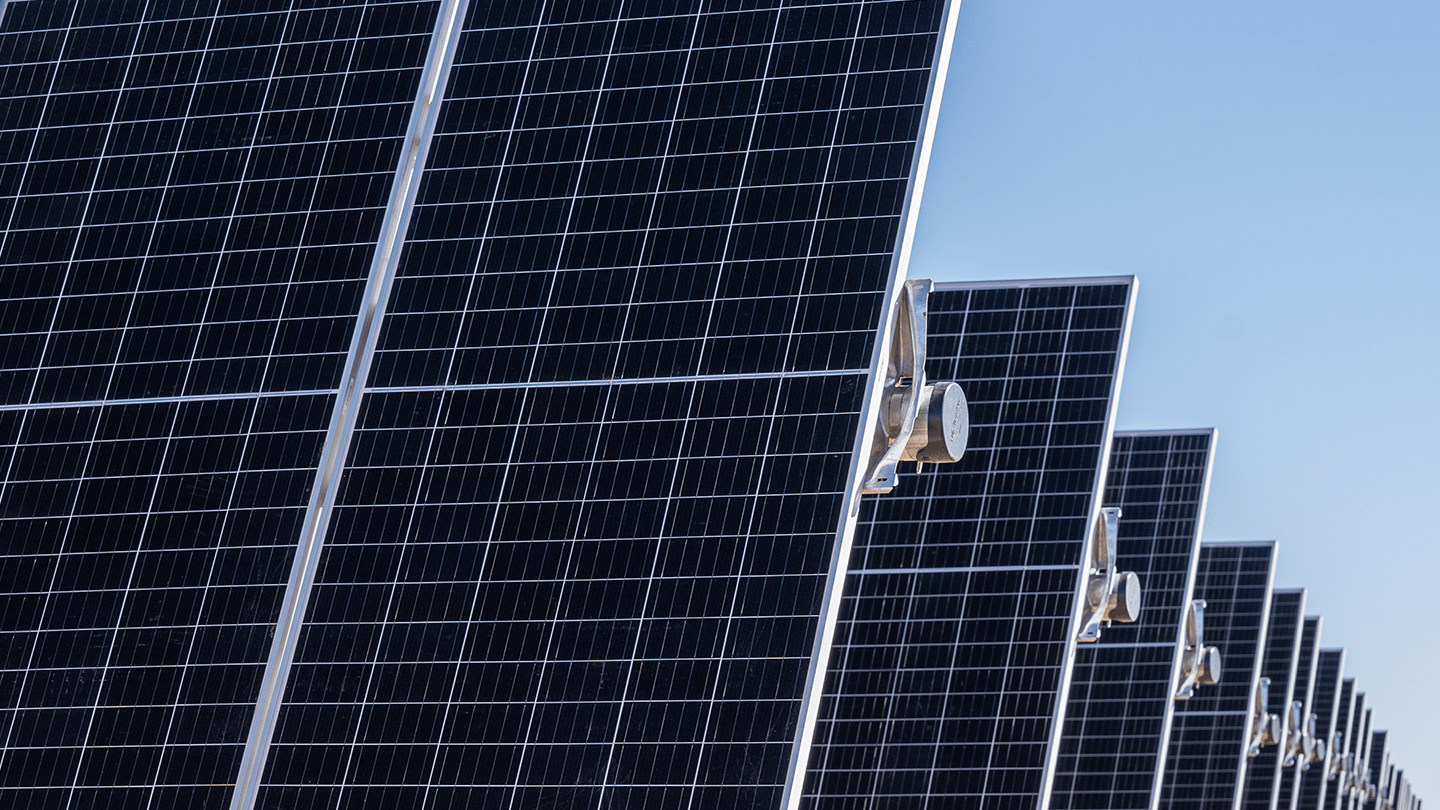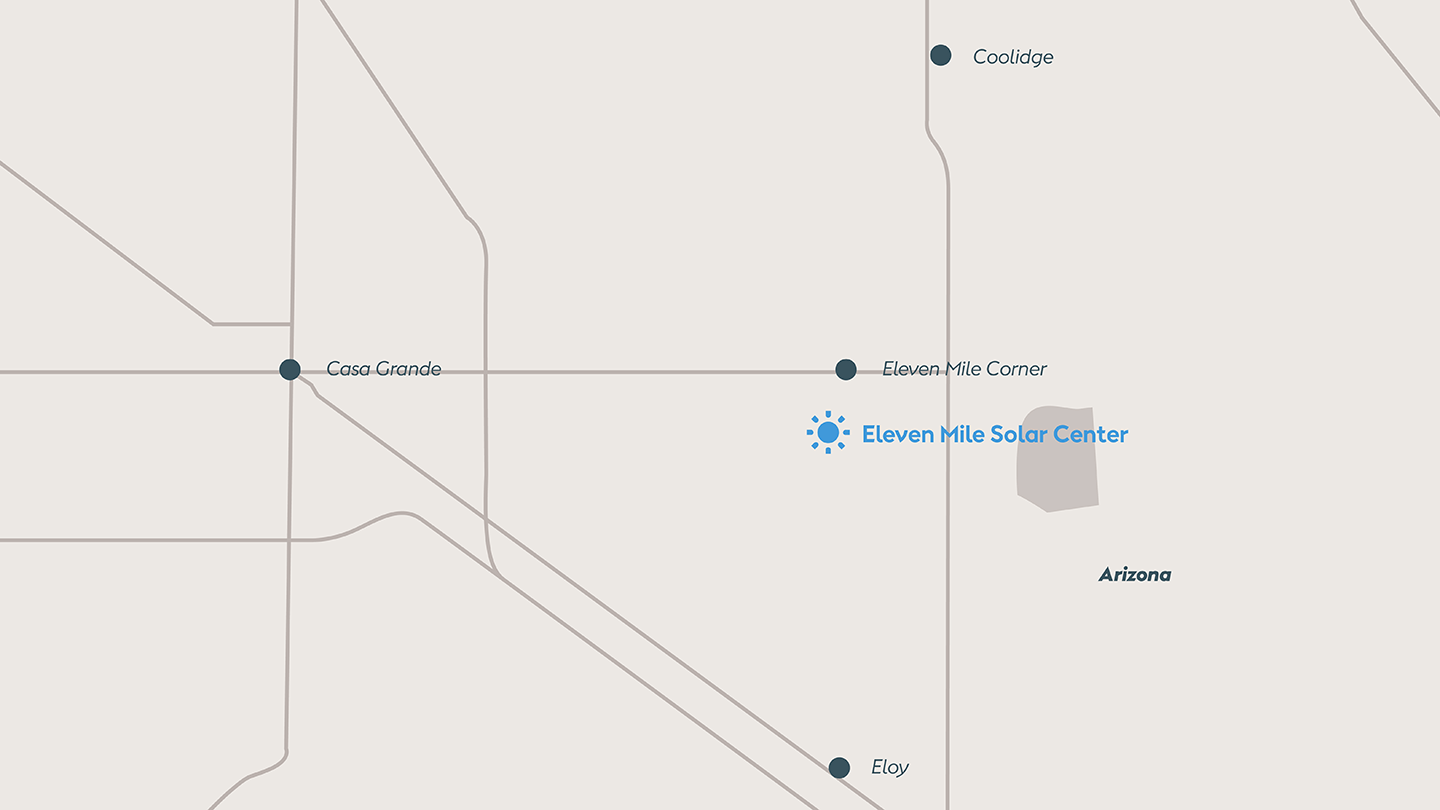About the project
Bringing local jobs, investment, and clean energy to Pinal County, Arizona
Ørsted’s Eleven Mile Solar Center is a long-term asset for Pinal County that will help meet the energy needs of the state by providing clean, flexible, solar-powered electricity.
Located on over 2,000 acres, the solar and battery energy storage system (BESS) will generate more than 900,000 MWh of energy annually – enough to power almost 63,750 homes. According to the Arizona Corporate Commission, the Eleven Mile Solar Center will also improve the reliability and safety of the local grid.
Construction of the Center began in 2023 and the project is estimated to be in operation in 2024.

